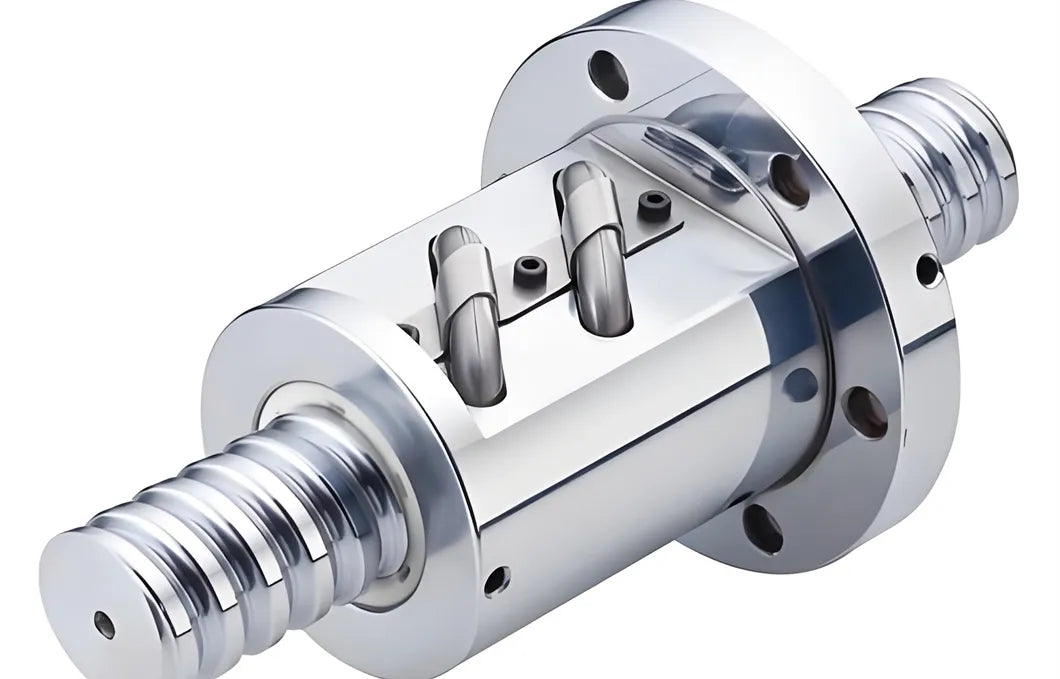The bearing ball screw is a high-efficiency transmission element, mainly used to convert rotary motion into linear motion or linear motion into rotary motion. The core feature of the ball screw is its ball circulation system, which reduces friction and improves transmission efficiency and precision by rolling the balls between the nut and the screw. This article describes two common ball circulation methods.
1. Internal Circulation
Each steel ball spiral circulation track has its own independent return link. Precision bearing ball screw pairs using this circulation method can operate smoothly and reliably in slow, frequent reciprocating or high-speed conditions.
1.1 Features
The nut of the internal circulation ball screw is usually shorter because the balls circulate inside the nut. This makes the internal circulation design very useful in space-constrained environments and is suitable for small equipment or compact mechanical structures.
Due to the circulation of the balls inside the nut, the internal circulation design usually provides a lower friction coefficient. This helps to improve transmission efficiency, reduce energy loss, and extend service life.
1.2 Applicable Conditions
- The operating speed is within 2000rpm;
- Suitable for small space structure;
- Meet the requirements of short stroke use (the running length is recommended to be greater than 2 times the lead length);
- Commonly used in equipment with short stroke or short distance reciprocating frequency, such as grinders/wire cutting/3D printing, etc.
1.3 Limiting Factors
The manufacturing process of the internal circulation bearing ball screw pair is relatively complex and costly, and may be restricted under certain special working conditions, such as high temperature, high corrosion and other environments.

2. External Circulation
The ball screw is composed of a screw rod, a nut, a steel ball, a bent pipe and a fixed block.
The steel ball rolls between the screw rod and the nut, and is connected by a bent pipe to achieve reflux on the nut. The bent pipe is installed on the outside of the nut. This type is called an external circulation ball screw.
2.1 Features
During the operation of the external circulation bearing ball screw pair, the friction between the ball and the screw and the nut generates less heat, and the heat dissipation area is larger, so the heat dissipation performance is excellent.
Due to its superior heat dissipation performance, the external circulation ball screw pair has a small temperature rise during long-term operation, which is conducive to maintaining the stability and accuracy of the equipment.
2.2 Applicable Conditions
The external circulation ball screw pair is suitable for occasions that need to bear large loads, high precision and high rigidity, such as CNC machine tools, precision instruments, etc.
2.3 Limiting Factors
Due to the structural characteristics of the external circulation bearing ball screw pair, it needs to occupy a certain space during the ball circulation process, so it may not be used in some occasions with limited space; in addition, for high-speed operation occasions, the friction and wear of the external circulation ball screw pair may be relatively large, and special attention should be paid to lubrication and maintenance.
Summary
By understanding the structure, working principle and ball circulation method of the bearing ball screw, we can better select and use the ball screw to improve the performance and reliability of mechanical equipment.
If you are interested in bearing ball screws or have any questions, please contact us.

